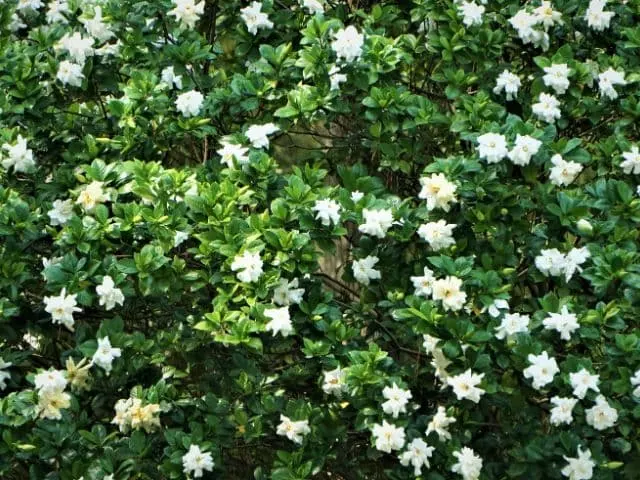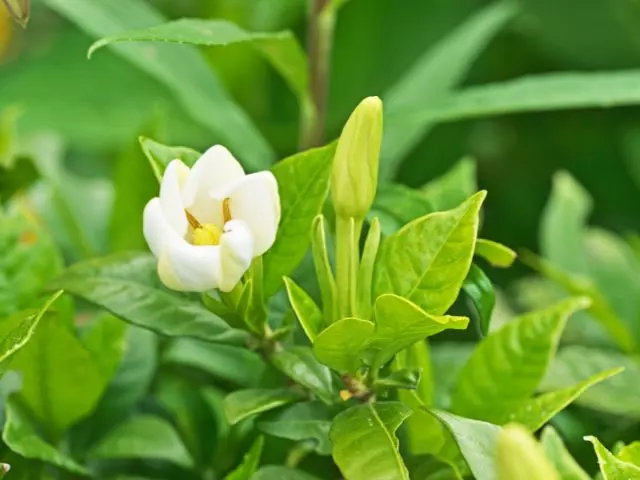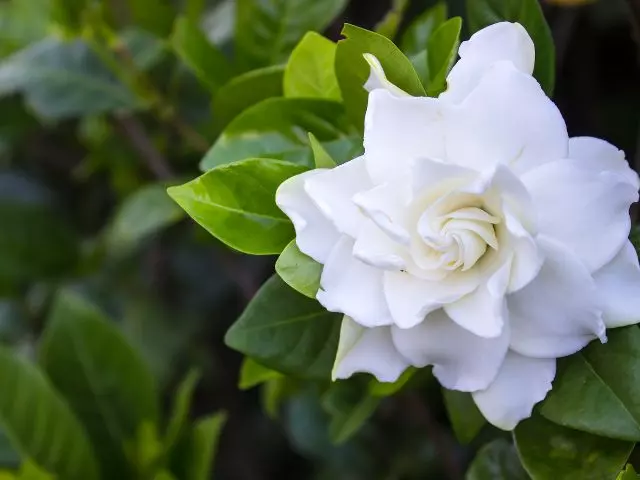Fertilizing gardenias is essential for the development and flowering of these spectacular plants. However, you have to use the right fertilizer for gardenias. If you want to get a stunning bloom on your gardenias, continue reading to learn about the best fertilizer for gardenias.
Throughout the post, I explain what nutrients and minerals gardenias need to provide a spectacular bloom. In addition, providing the right fertilizer will promote gardenia development and prevent your gardenias from having yellow leaves.
Should I fertilize gardenias? Like all plants with important blooms, such as the aromatic gardenia bushes, it is highly recommended to fertilize them several times a year. It is also widespread for many gardeners to see yellow leaves on their gardenias in late summer and early fall due to a lack of nutrients after blooming. Gardenias use a lot of nutrients and minerals to bloom, so they need proper fertilization. It is also essential to fertilize before winter to provide gardenias with the necessary nutrients to face the winter.
Table of Contents
What Is the Best Fertilizer for Gardenias
What Is the Best Fertilizer for Gardenias? Before choosing the right fertilizer for gardenias or any plant, it is essential to measure the soil pH. Gardenias need a pH between 5 and 6, with 5.5 being ideal for proper growth and development. Check the pH of the soil before choosing a fertilizer for gardenias.
The pH must be correct so that the gardenia can properly absorb all the nutrients and minerals from the fertilizer. The plant takes advantage of all the nutrients the fertilizer provides by having the proper pH. If the pH is not correct, it should be corrected.
When looking for gardenia fertilizers, you will notice on the fertilizer packages three numbers, for example, 3-1-2. These are the NPK values. NPK stands for Nitrogen, Phosphorus, and Potassium. For example, a 3-1-2 gardenia fertilizer has 3% nitrogen, 1% phosphorus, and 2% potassium. The remaining components of the fertilizer are other minerals such as iron and copper.
If your gardenias have not recently suffered from pests and diseases, apply a 3-1-2 gardenia fertilizer. However, if your gardenias have suffered from pests and diseases, using a gardenia NPK fertilizer 9-13-11 is best. This last fertilizer has more nutrients for a plant when recovering from a pest or disease.

Best Fertilizer for Gardenias
As mentioned above, if your gardenias have not suffered from any disease or pests, using a 3-1-2 NPK fertilizer is best. You can use a slow-release granular fertilizer for gardenias or a liquid fertilizer. It does not matter if you choose a liquid or solid fertilizer. It is only important to know the NPK composition and that you follow the manufacturer’s directions.
However, it may be the case that your gardenias have yellow leaves due to nutritional deficit, so applying a fertilizer with a higher concentration of nutrients will be necessary. In cases where the gardenia lacked nutrients or pests and diseases, I recommend using an NPK 9-13-11 fertilizer for gardenias.
Sometimes, you may not find a label that says “fertilizer for gardenias”. They are commonly called “fertilizers for acid loving plants” or “acid loving fertilizer for gardenias”. Whatever label you see on the fertilizer, the most important thing is that the NPK values are as mentioned in this post.
In summary, if your gardenia grows and develops well every year, it is best to use an NPK 3-1-2 fertilizer. On the other hand, if your gardenia suffers from any disease or pest, you should use an NPK 9-13-11 fertilizer to give your gardenia an extra dose of nutrients and minerals.
What Is the Best Fertilizer for Gardenias in Pots
What Is the Best Fertilizer for Gardenias in Pots? It is best to use a liquid fertilizer for all those gardeners who have their gardenias in pots. A 3-1-2 liquid NPK fertilizer for gardenias is an excellent choice for use in a pot. I prefer liquid fertilizers because of their easy dissolution.
Read the manufacturer’s instructions and dilute the fertilizer correctly. Apply the fertilizer only at the base of the plant and avoid wetting the gardenia leaves with the fertilizer. In a short time, you will see your gardenia improve. In pots, gardenias have fewer nutrients than in the ground. Therefore, it may be necessary to fertilize gardenias in pots more often.
Can I Use Rose Fertilizer on Gardenias?
As a gardener, it happened to me sometimes not to have fertilizer for gardenias but to have fertilizer for roses. You can use rose fertilizer on gardenias without any problem. Before fertilizing, check the NPK of the rose fertilizer. Usually, the NPK values of rose fertilizers are generally the same as those of gardenia fertilizers.
So, can I use rose fertilizer on gardenias? A rose fertilizer will also work for your gardenias. You will find that rose fertilizer NPK values are usually 4-6-4 or 3-4-3, similar to gardenia fertilizers. Follow the manufacturer’s instructions.
When to Fertilize Gardenias
When to Fertilize Gardenias? The optimal timing to fertilize gardenias is when they are actively in the process of growing and flowering. Familiarize yourself with the period of active growth in your region, which spans from the final frost of winter to the initial frost of fall. It is within this timeframe that you should administer your chosen fertilizer.
This aligns with the spring and summer months when the gardenias are flourishing, fostering their health and facilitating the production of exquisite blooms. While it is possible to provide some nourishment during the autumn, it is not obligatory as the plants are getting ready for the winter and their dormant phase.
Throughout the winter season, the plants experience limited growth, negating the need for supplementary nutrients or nourishment to be introduced into the soil. Always read the manufacturer’s instructions for proper fertilizer application.

How to Fertilize Gardenias
How to Fertilize Gardenias? Gardenia fertilizers usually come as solids or liquids to be dissolved in water. You should read the manufacturer’s instructions for whichever fertilizer you choose because dilutions and applications may vary. As a gardener, I prefer liquid fertilizer for my gardenias, as I have been using on my gardenia plants for years.
Fortunately, my gardenias have not recently suffered from any diseases, so I chose the NPK 3-1-2 fertilizer mentioned in this post. Otherwise, if you want to fertilize due to the appearance of gardenia leaves turning yellow, it is best to choose an NPK 9-13-11 fertilizer for gardenias to provide enough nutrients.
Below, I will explain how I apply the fertilizer to my gardenias.
- Before applying the fertilizer, water the gardenias thoroughly. That ensures that the soil is adequately moist and helps prevent root burn from the fertilizer.
- Using a measuring spoon, measure out one teaspoon of the fertilizer. Add the measured fertilizer to the watering can or container.
- Fill the watering can with 32 ounces (1 quart) of water. The water should be at room temperature.
- Stir or shake the watering can to ensure the fertilizer is fully dissolved and mixed. That creates a diluted fertilizer solution.
- Position the spout of the watering can at the base of the gardenia plant, ensuring that the solution is applied to the soil and not splashed onto the foliage. Gently and evenly pour the diluted fertilizer solution onto the soil around the plant.
- Use the recommended amount of diluted fertilizer solution to avoid over-fertilizing. Gardenias are sensitive to excessive nutrients.
Remember that these instructions are for a specific dilution ratio of 1 teaspoon of gardenia fertilizer per 32 ounces of water. Adjust the measurements accordingly if you need to make more or less solution. Also, follow the recommended frequency of fertilization based on the guidelines provided earlier.
How Often to Fertilize Gardenias
How Often to Fertilize Gardenias? Fertilize your gardenia plant every 2-4 weeks while actively growing between March and October (northern hemisphere). Avoid fertilizing between November and February (northern hemisphere). Always follow the manufacturer’s directions for applying the correct amount of fertilizer. Too much fertilizer is also harmful to gardenias.

Final Conclusions
In conclusion, fertilizing gardenias ensures plants’ beauty and health. The right type of fertilizer, the right timing, and the right amount are all important factors to consider.
Suppose your gardenia did not suffer from problems such as pests, diseases, or lack of nutrients. In that case, you should use an NPK 3-1-2 fertilizer. On the other hand, if your gardenia was affected by any pests or lack of nutrients, it is recommended that you use an NPK 9-13-11 fertilizer to provide much more nutrients and minerals to the gardenia so that it can recover quickly.
An NPK 3-1-2 liquid fertilizer for gardenias is an excellent choice for use in a pot. Also, a rose fertilizer will work for your gardenias.
In addition to adequately applying fertilizer, it is imperative to prune gardenias correctly each year. Pruning encourages the growth and development of the gardenia. I encourage you to read our article on how and when to prune gardenia.




